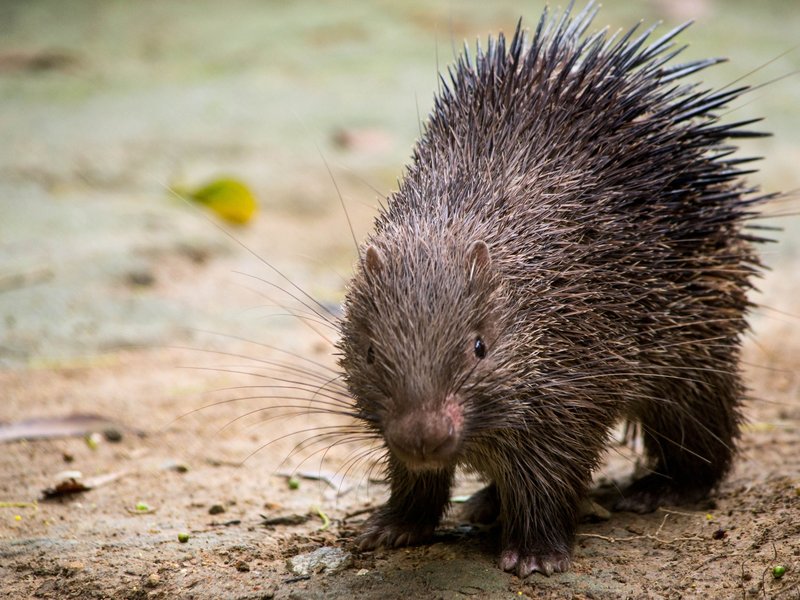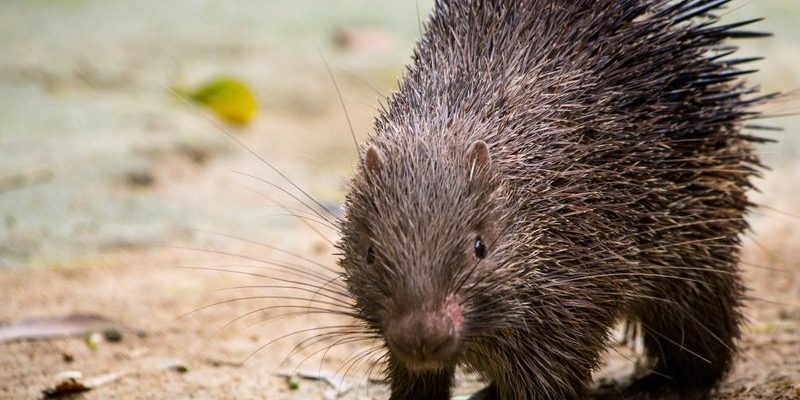
Porcupines are not just found in one spot; they have a rich tapestry of habitats across North America and beyond. From lush forests to rocky terrains, these creatures have adapted to a variety of environments. In this article, we’ll break down the different habitats where porcupines thrive, how their living spaces impact their behavior, and some fun facts about these endearing animals.
Porcupine Habitats: Forests and Woodlands
Porcupines love to dwell in forested areas, especially coniferous and deciduous forests. Picture a cozy cabin in the woods. That’s what a porcupine’s home is like—ample trees for climbing and gnawing on, plus plenty of cover from predators. These animals often prefer areas with a mix of young trees and mature forests.
Why forests? Well, it’s all about food! Porcupines primarily feed on tree bark, leaves, and fruits, which are plentiful in these habitats. They have a particular fondness for pine trees, as the needles and bark provide delicious meals. If you ever see a tree that looks like it’s been stripped of its bark in patches, chances are, a porcupine had a late-night snack!
You might be wondering about the temperatures these creatures endure. Luckily, porcupines are equipped to handle a range of climates. In colder regions, they grow thicker fur that keeps them warm during harsh winters. In warmer places, they adapt by becoming more nocturnal, actively searching for food during the cooler evening hours.
Porcupines in Rocky Regions
In addition to forests, porcupines also make their homes in rocky terrains—think mountainous regions or rugged cliffs. They’re quite the climbers, using their strong claws to navigate rocky surfaces. This habitat offers them safety from predators like coyotes and bobcats, allowing them to find shelter in crevices and under rocks.
So, why choose a rocky area? The answer lies in food sources again. While porcupines love munching on wood, they also enjoy a variety of vegetation found in these regions. From shrubs to herbs, the nutrient-rich plants in rocky habitats provide ample sustenance.
Living in these harsh conditions can be tough, but porcupines are resourceful. They often burrow or nest in tree hollows or under fallen logs for protection. If you happen to hike in a mountainous area, keep an eye out for these critters; they’re often seen foraging along the rocky slopes.
Urban Adaptations
Believe it or not, porcupines have adapted to live in urban settings too. As cities expand into their forested habitats, these clever creatures have found ways to thrive in suburban areas. You might spot one rummaging through gardens or nibbling on the bark of trees planted along streets.
But why would a porcupine choose a bustling city over the tranquility of the woods? The main draw is the **easy access to food**. Gardens and parks often have plenty of soft vegetation, which is a porcupine’s buffet. However, this can lead to conflicts with humans, especially when they munch on beloved plants.
To coexist with these prickly neighbors, make your yard less inviting by using fencing or planting less palatable plants. Remember, porcupines are just trying to get by like the rest of us!
Distribution Across North America
When we talk about porcupines, we’re generally referring to two main species: the North American porcupine and the African crested porcupine. Here, we’ll focus on the North American variety since they’re the ones most commonly encountered in the U.S. and Canada.
Where exactly can you find them? North American porcupines are distributed throughout most of Canada and the northern United States, extending down into parts of Mexico. They prefer areas that offer a mix of forest cover and open land.
You can commonly find them in:
- Eastern and Western Canada
- The Appalachian Mountains
- Pacific Northwest
- Parts of the Midwest and Great Lakes region
While they are versatile and adaptable, you won’t see porcupines in extremely arid regions or deep deserts. Their need for vegetation keeps them closer to areas where they can find food and shelter.
Behavioral Adaptations to Habitats
Porcupines have a few interesting behaviors that help them thrive in different habitats. For instance, they’re primarily **nocturnal**, which means they come out at night to forage. This behavior helps them avoid predators during the day when larger animals are active.
In forest environments, they’re great climbers, often ascending trees to find food or evade danger. Unlike some animals, porcupines are not great at running away when threatened. Instead, they rely on their **quills** for defense. If a predator gets too close, a porcupine will turn its back and raise its quills, making it clear that they’d rather not engage.
Moreover, porcupines are *solitary* creatures. You won’t usually find them in groups, as they prefer to carve out their own territories. This solitary behavior is especially important when it comes to food, as each porcupine needs to find enough to eat without competing with others.
Climate Considerations for Porcupines
Climate plays a significant role in determining where porcupines live. They are quite adaptable, but they do have their limits. In colder areas, porcupines hibernate during winter months. They might spend a lot of time in tree cavities, curled up to keep warm.
In contrast, in warmer regions, they are more active year-round. Here’s the thing: **climate change** can disrupt their habitats. As temperatures rise and ecosystems change, porcupines may find it harder to find food or shelter in their traditional areas.
Being aware of these challenges is vital for conservation efforts. Preserving their natural habitats helps ensure these incredible animals continue to thrive in both their natural and adapted environments.
Fun Facts About Porcupines
Before we wrap up, here are a few fun facts about porcupines that you might not know:
- Porcupines have around 30,000 quills!
- Their quills are actually modified hair, which they can’t shoot or throw.
- They can live for over 15 years in the wild.
- Porcupines have a unique way of communicating through vocalizations and body language.
These tidbits illustrate just how remarkable porcupines truly are. They may seem simple, but they have complex lives filled with adaptation and survival.
Understanding **where porcupines live** is more than just knowing their habitat. It’s about appreciating their unique adaptations and the role they play in our ecosystems. From their cozy forests to rugged mountains and even bustling suburbs, porcupines remind us how adaptable nature can be.
So, the next time you’re out in nature or even wandering through a neighborhood, keep an eye out for these charming creatures. They may just surprise you!

